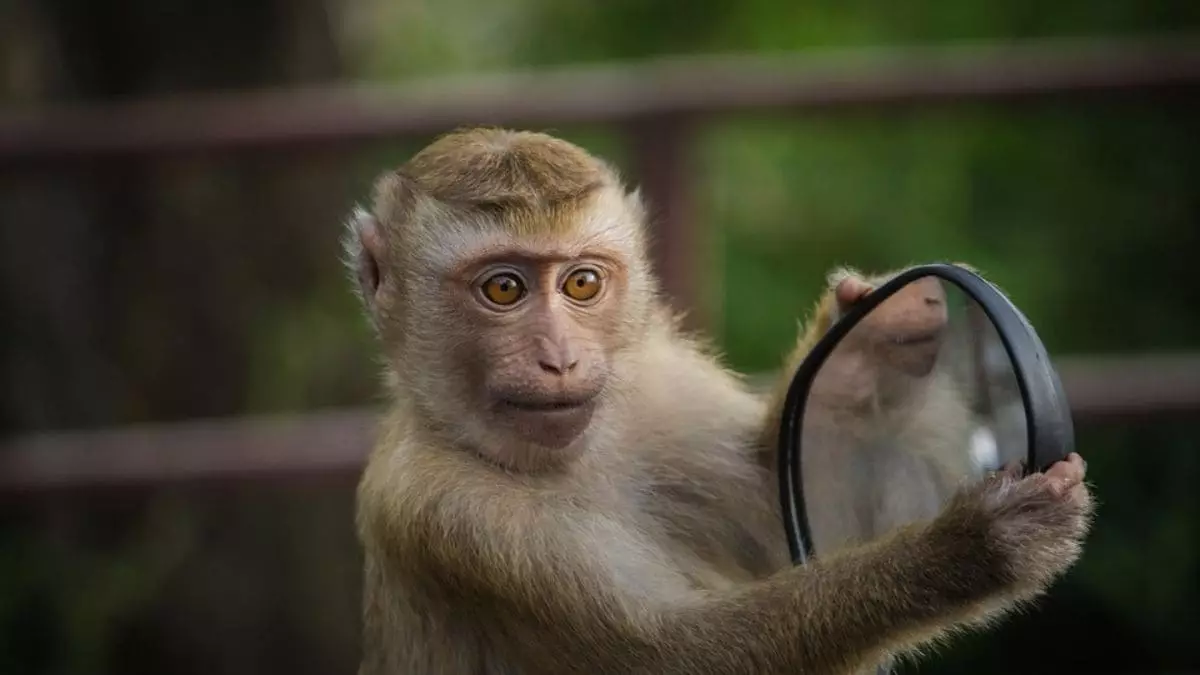Self-awareness is a complex and multifaceted trait that has intrigued scientists and ethologists for decades. The ability to recognize oneself in a mirror—a common measure of self-awareness—has been observed in various species, including great apes, dolphins, and elephants. However, when it comes to baboons, particularly the chacma baboons (Papio ursinus) studied in Namibia’s Tsaobis Nature Park, the findings reveal a stark contrast. This article explores a recent study that examined the self-recognition capabilities of wild baboons and discusses the broader implications of these findings for our understanding of animal cognition.
The Research and Its Findings
Over a five-month period, researchers conducted a series of experiments involving large mirrors placed near water sources frequented by two troops of baboons. This setting provided a naturalistic environment to assess whether these primates could associate their reflections with their own bodies. The novelty of the study lay in its choice of non-laboratory conditions, which often differ from controlled environments where previous self-recognition studies were conducted.
Researchers implemented a clever experimental design where they projected laser dots onto the baboons while they stood in front of mirrors. The goal was to see whether the baboons would touch the dots when they appeared on their faces, similar to the reactions observed when dots were placed on more visible areas of their bodies, such as arms or legs. Interestingly, though a significant majority (64%) of baboons responded to the visible dots on their limbs, only one out of fifty-one baboons reacted to the dots projected onto their cheeks or ears during mirror observations. This discrepancy raises profound questions about the nature of self-perception in these primates.
The research findings indicate that wild baboons may lack self-awareness in the way that some other species do. While the presence of mirrors piqued the baboons’ curiosity, their inability to react to the laser dot on their faces suggests that they do not recognize the reflection as themselves. According to Alecia Carter, an evolutionary anthropologist involved in the study, this limitation points to the complexities of measuring self-awareness in animals. Such a trait, she argues, might not be as straightforward or universally applicable among different species.
Moreover, the perspective that self-awareness exists on a continuum rather than as a binary characteristic is gaining traction among researchers. For example, psychologist Lindsay Murray notes that even in humans, not all children demonstrate self-recognition at the same developmental stage; only about 65% manage to pass the mirror test by age two. This variability invites a reconsideration of self-awareness as a trait that may develop through experience rather than being an innate quality.
Crucially, the study prompts a reevaluation of the necessity for self-recognition in animals. Carter suggests that self-awareness may not serve a critical survival function for baboons. They thrive in complex social structures and environments without the need for self-recognition. Thus, the absence of this trait might reflect evolutionary pressures that favor different cognitive skills tailored to survival rather than introspection.
Moreover, the findings align with observations in other non-ape primates, supporting the notion that self-recognition as measured by the mirror test is not universally present across all primate species. Many animals, including trained rhesus monkeys, have demonstrated mirror use for self-exploration, but these behaviors can emerge under specific conditions that don’t necessarily align with natural instincts.
The study of self-awareness in animals, particularly in wild baboons, leads to a broader reassessment of how we understand animal cognition. The insights gained from the Tsaobis Nature Park challenge conventional notions that self-recognition is essential for complex social interactions or survival. Moving forward, researchers may need to consider alternative assessments of awareness and adaptation that are better aligned with the lived experiences of various species. Ultimately, this research not only enhances our understanding of baboons but also sheds light on the intricate gradations of self-awareness that exist across the animal kingdom.


Leave a Reply